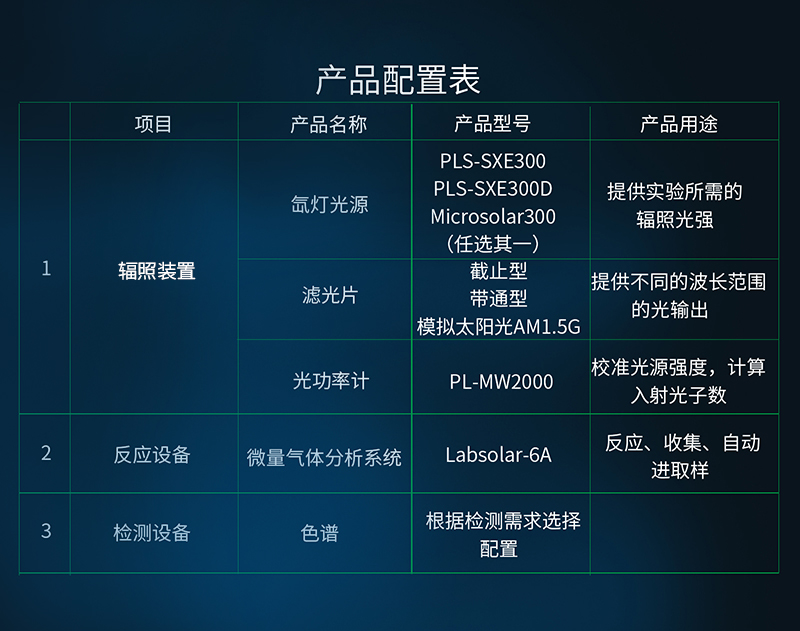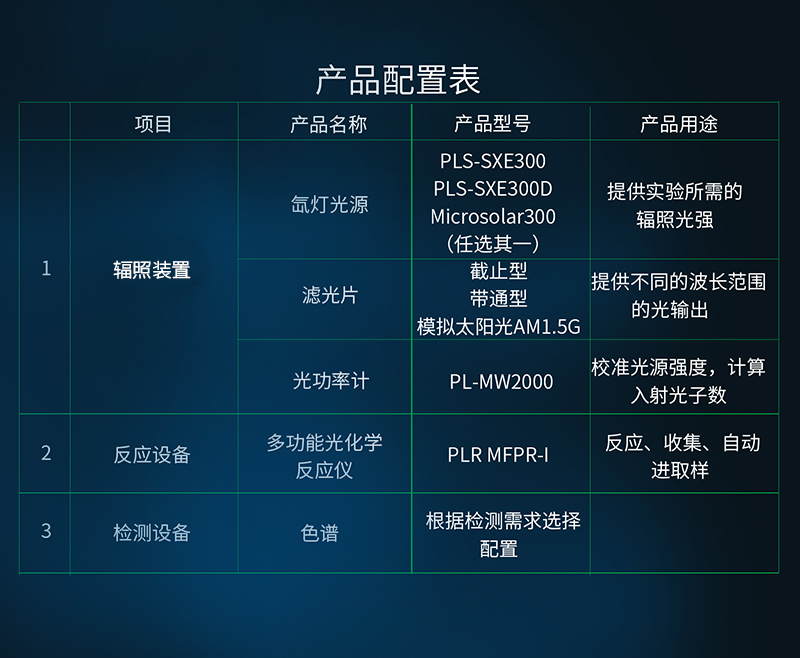Compared to reactors in gas-liquid-solid phases, the changes to consider for gas-solid phase photocatalytic CO₂ reduction are as follows:
The contact between the reactor atmosphere and the catalyst, ensuring sufficient interaction for catalytic efficiency.
The issue of water, used as a hydrogen source in CO₂ reduction experiments, within the catalyst.
Configuration 1: Light Source + Labsolar 6A + Customized Gas Chromatograph
Configuration 2: Light Source + PLR MFPR-Ⅰ Multi-Functional Photochemical Reactor + Customized Gas Chromatograph

Advantages of the Solution:
1.Innovative glass multi-way sampling valve (built-in quantitative loop) + automatic actuator, enabling automated sampling injection on a glass valve. This ensures structural foundation for circulation efficiency while maintaining gas-tightness. Avoiding placing the sampling valve on the chromatograph, eliminating glass tubing in the circulation pipeline to prevent adsorption, and providing lower gas resistance, thus promoting better gas circulation.
2.Built-in instrument methods that require only setting the sampling period and frequency, ensuring simplicity. The sampling process is fully automated, allowing 24-hour unattended operation and saving researchers' time. Manual operation is also retained.
3.Small system circulation volume, around 300 mL, using a high-throughput magnetic drive syringe pump for rapid and uniform gas circulation of about 5 minutes. This allows more sample points for product detection in the same reaction period.
4.Excellent gas-tightness, oxygen leakage within 24 hours is < 3 μmol, ensuring experimental accuracy, particularly for oxygen production experiments.
5.Linear regression of the standard curve: Within the hydrogen production range of 100 μL to 10 mL, the system's correlation coefficient is ≥ 0.999; RSD for repeated sampling is < 3%.
6.Outstanding expandability and compatibility with a rich reactor library. Gas-solid phase experiments (with in-situ temperature measurement) can be achieved by changing reactors, or combined with PEC2000 for online measurement of gas and electrical signals related to Faraday efficiency.
7.Multi-functional quantitative buffer gas storage device, allowing variable volume to adapt to different gas production requirements and system sampling volumes.
8.Real-time monitoring of system status using the Labsolar 6A Photocatalytic Test System, including reaction gas pressure, temperature, and automatic multi-way valve status. These aspects combined ensure system accuracy and repeatability.
9.Delivered as a complete system, portable installation without on-site open flames, ensuring laboratory safety.
10.Metal protective enclosure offering protection for system glass components, radiation, and potential reaction gas leaks. Glass tubing is mostly concealed, maintaining an elegant appearance without increasing dimensions, measuring only 490 × 520 × 740 mm.


Advantages of the Solution:
1.Capable of withstanding certain temperature and pressure tests, withstanding temperatures of 180°C and pressures of 0.9 MPa.
2.Compact size, occupying minimal laboratory space and saving room.
3.Large sample-to-quantitative ratio, high sensitivity. System volume is about 100 mL, with a 0.2 mL quantitative loop.
4.Fully automated sampling, 24-hour unattended operation, saving time.
5.Diverse and rich functionality, capable of both top and side illumination, suitable for both photochemical and photoelectrochemical experiments.
6.Expandable for electrocatalytic and photoelectrocatalytic hydrogen and carbon dioxide reduction experiments.
